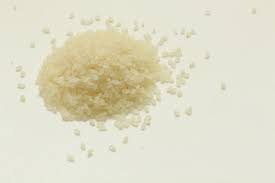Japonica Rice:

Scientists at the Delhi-based National Institute of Plant Genome Research (NIPGR) have used CRISPR-Cas9 gene editing technology to increase phosphate uptake and transport in japonica rice varieties.
- Japonica is one of the two major eco-geographical races of O. sativa(O. sativa japonica), the other is Indica.
- It is a group of rice varieties from northern and eastern China grown extensively in some areas of the world.
- It is an Asian rice variety that belongs within the broader sinica rice family.
- It is characterized by its short to medium grain and is harder, thicker, and stickier than traditional white rice.
- Japonica grains are short, roundish, spikelets are awnless to long-awned, grains do not shatter easily, and have 0-20% amylose content.
- It includes several varieties, including the sushi rice and glutinous rice, which despite its name, is entirely gluten free.
- It is found in the cooler zones of the subtropics and in the temperate zones.
- It is the primary type of rice grown and consumed in Japan and also in China, Korea, Vietnam, Indonesia.
- The different varieties of Japonica are called cultivars. Each Japonica rice cultivar has been developed to exhibit unique qualities, making them suitable for various culinary uses and growing conditions.




